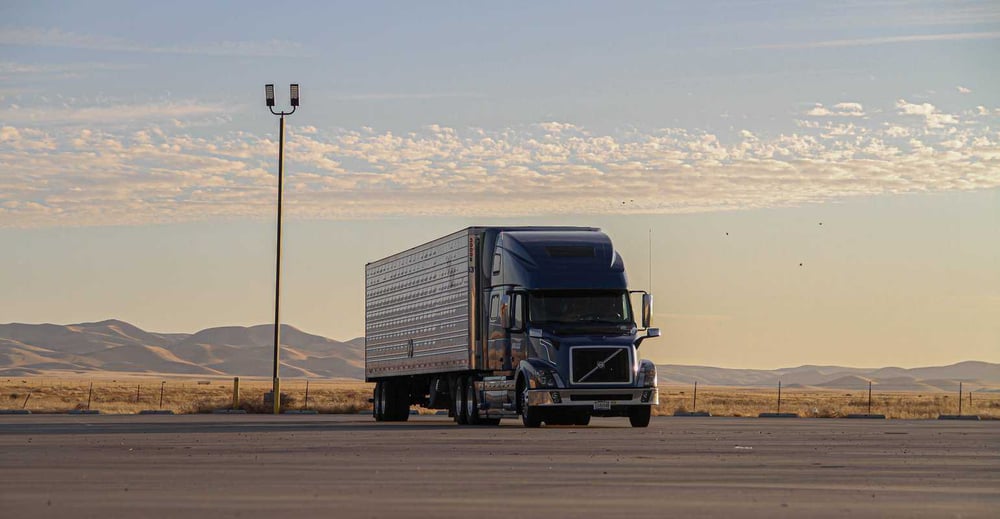Entrepreneurship and business ownership are paths filled with potential rewards and risks. While focusing on growth and innovation, it’s crucial not to overlook personal financial planning and protection. Life insurance emerges as a cornerstone of a solid financial plan, providing security for those who depend on you. Instant life insurance offers a quick and efficient way to secure this safety net, ensuring that your loved ones or business partners are protected in unforeseen circumstances. It’s an essential consideration for anyone invested in the long-term success and stability of their business ventures.
The logistics industry, responsible for maintaining a smooth flow of goods, has become an important component of global commerce. Let’s first be clear that this industry is not only limited to transportation. Other activities like inventory management and distribution are also a part of the logistics industry.
Due to having multiple aspects, this industry carries great potential for generating passive income. While you may think of this industry to be labor-intensive, you can tweak your business model in a way that can generate income with limited resources.

All you have to do is utilize automation, strategic planning, and delegation, and you will be on your way to establishing a self-sustaining logistics business. Let’s learn some useful ways you can accomplish this!
Understanding Passive Income
For those of you who don’t know, passive income is a type of income generated from activities in which you are not actively participating and putting effort on a daily basis. This can take a lot of forms. For example, the income generated from rental properties, investments, or a business that requires minimal management is passive income.
While talking about the logistics sector, the passive income usually comes from a business that is running on streamlined processes, technologies, and team management. Such businesses don’t require regular hands-on management, and the income generated by them is categorized as passive income.

How a Logistics Business Can Be a Source of Passive Income
As mentioned above, when you design and manage your business processes in a way that reduces the need for constant supervision, you are actually making a source of passive income. By leveraging the right technology for organizational tasks like order processing and inventory management, you can reduce your logistics business’s dependence on manpower.
When you are not directly involved in the logistics and getting most of the work done by automation, it becomes a source of passive income. Additionally, having a well-trained and reliable team working for you can reduce your direct involvement in business operations, which can help generate passive income.
Step-by-Step Guide to Starting a Logistics Business
Market Research and Identifying Niche
The logistics market is big enough, and to make your mark in the industry, you will need to conduct thorough market research and identify your niche. To begin, you will have to start by analyzing the demand for logistics services in your target area.
After you have done this part, there comes identifying specific sectors or industries that are untouched in that area and have high demand, too. This can be something as specific as specialized transportation or warehousing for a particular product type. By honing your skills in a specific niche, you can offer unique value to your audience and make your mark in a competitive market.
Creating a Business Plan
Now that you have researched your target market and identified your niche, it is crucial to come up with a business plan that outlines the vision of your business and detailed competitive analysis. To make your business plan more detailed and effective, you can add a detailed marketing strategy, financial projections, and a clear plan for scalability in the future.
Remember that a detailed business plan should not only provide you with guidance but also have the power to attract potential investors and secure financing. It will help your business thrive in the long term.
Legal Requirements and Obtaining a DOT Number
When running a logistics business, it is necessary to comply with legal regulations and requirements. This can be ensured by obtaining all the required documents from the state you are operating in. These documents include all the necessary permits, licenses, and certifications.
Securing a DOT (Department of Transportation) number is one of these crucial requirements. The DOT number is a unique identifier that is used for registering commercial vehicles with the state. This number ensures your compliance with transportation regulations and demonstrates your commitment to safety and legality.
It is especially important if you are going to operate interstate and will be crossing borders on a regular basis. So, research how to get DOT number and then move forward with the process to obtain it.
Securing Funding and Managing Finances
After making a solid business plan and securing all the necessary permits and licenses, you will need to determine the capital needed to start your logistics business. You can either invest all of your own money to launch your business or explore other funding options.
This includes bank loans, investments from investors, or grants from the government, along with your personal savings. Just be sure to follow effective financial management practices to maintain a healthy cash flow and ensure the sustainability of your business. Some of these practices include tracking your expenses, revenue, and profitability from time to time.
Building a Self-Sustaining Model
Automating Operations
If you want to build a self-sustaining business model for your logistics business, automation can be the most helpful tool. To automate your business processes and streamline them, you can utilize advanced logistics software and technology solutions.
These solutions will help you efficiently handle tasks such as order processing, route optimization, and inventory management. Automation frees up time and resources for strategic decision-making by reducing manual intervention and minimizing errors, thereby leading to business growth.
Hiring and Managing Staff
Your team is your true asset that will actually help you build a self-sustaining business model. A competent and reliable team will manage your day-to-day business operations without your direct involvement in the process.
Just be sure to provide comprehensive training to your employees and establish clear process guidelines to ensure each team member understands their role in the business. In this context, team management techniques like performance evaluation and getting feedback will provide you with high levels of operational efficiency.
Partnering with Third-Party Services
Running a logistics business doesn’t mean you have to manage all business operations yourself. Consider outsourcing non-core functions of your business to reduce the workload on your internal team and enhance overall efficiency.
In this regard, partnering with specialized service providers for logistics tasks like warehousing, packaging, or transportation will allow you to focus on core activities while benefiting from the expertise and resources of third parties.
Revenue Generation Strategies
Diversifying Services
If you want to generate more business revenue, you will need to diversify your services to different industries and market segments. For example, you can provide specialized services like cross-border shipping and handling of temperature-sensitive goods.
You can even start specialized services in a particular sector, like medical supply chain logistics. By diversifying, you not only expand your revenue streams but also position your business as a versatile and reliable logistics partner.
This can then help you attract a broader client base and stop your business from being overly dependent on a single sector or service.
Building Strong Client Relationships
Just like your workers and team, customers are your biggest assets who are actually providing you with revenue. That’s why you will have to build strong client relationships in order to attract more customers. To do this, it is advised to meet deadlines, communicate effectively, and proactively address client needs.
This approach will foster trust and loyalty in your clients, leading to strong client relationships. These relationships lead to repeated business and referrals, contributing to the long-term sustainability and growth of your venture.
Exploring Additional Revenue Streams
It is true that core logistics services are the core part of your business, but you will also need to explore additional revenue systems to generate more and more revenue. This can include services such as packaging solutions, warehousing services, and other specialized offerings like these.
For example, you can collaborate with an e-commerce platform or a manufacturing company to open new revenue streams. This way, you can maximize your business income and make your business stand out from the competitors.
Risk Management and Sustainability
Insurance and Liability
Once you are done planning for revenue generation and scaling your business, you must protect your business by employing risk management techniques. Protecting your business and assets from unforeseen events is a critical aspect of risk management.
To ensure this, you will need to invest in insurance coverage, including liability insurance and insurance of your cargo and fleet. These insurances act as a safety net and provide your business with financial protection in the event of accidents, damages, or other unexpected incidents.
Sustainable Practices
Implementing sustainable practices not only benefits the environment but also contributes to the long-term success of your logistics business. You can achieve environmental sustainability by adopting ways like optimizing routes for fuel efficiency, using eco-friendly packaging materials, and exploring alternative energy sources.
Investing your time and efforts in these approaches can ultimately lead to cost savings, enhance your brand reputation, and attract environmentally-conscious clients to work with you.
Continuous Improvement
A famous saying goes, “If you are not growing, you are dying.” That’s why it is important to regularly evaluate and refine your business processes to maintain competitiveness and efficiency. Stay abreast of technological advancements and industry trends to identify opportunities for improvement.
You will also need to engage with your team to gather feedback and implement continuous learning initiatives to drive ongoing improvement.
Starting a self-sustaining passive logistics business requires careful planning, strategic decision-making, and a commitment to continuous improvement. By completely understanding your industry and work processes, you can leverage technology, build a reliable team, and implement sound business practices to create a thriving, self-sustaining business.

